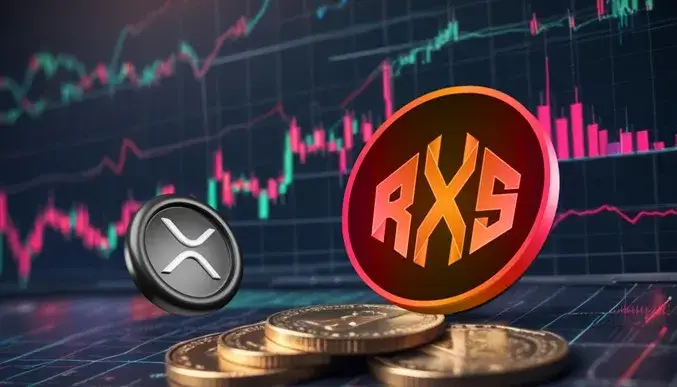XRP Price CAD Performance Compared to Other Cryptos in Canada

Cryptocurrencies have gained immense popularity worldwide, and Canada is no exception. Investors and traders in Canada closely monitor the performance of various digital assets. Among these, XRP (Ripple) stands out as a noteworthy player in the market. In this article, we will compare the XRP price CAD performance to other leading cryptocurrencies in Canada, including Bitcoin (BTC), Ethereum (ETH), and Litecoin (LTC).
Understanding XRP and Its Role in the Crypto Market
Before diving into the price performance of XRP in Canada, let’s briefly discuss what XRP is and its unique position in the cryptocurrency space.
XRP is the native cryptocurrency of the Ripple network, designed to facilitate fast, low-cost international money transfers. Unlike Bitcoin and Ethereum, which are primarily used as stores of value and platforms for decentralized applications, XRP focuses on solving real-world financial problems, especially cross-border transactions. This utility-driven approach has made XRP an attractive option for investors, especially in the remittance and banking sectors.
XRP Price CAD: A Look at Its Historical Performance in Canada
The performance of XRP in Canadian dollars (CAD) has been volatile, similar to other cryptocurrencies. In the past few years, XRP has experienced significant price surges, followed by corrections and periods of stagnation.
XRP Price CAD in 2023: A Roller Coaster Ride
In 2023, the XRP price CAD experienced several ups and downs, influenced by factors such as regulatory news, market sentiment, and broader trends in the cryptocurrency industry. For example, when Ripple gained positive developments in its legal battle with the U.S. Securities and Exchange Commission (SEC), XRP saw a brief spike in price. However, like many altcoins, XRP also faced periods of price decline, often mirroring the price movements of Bitcoin.
XRP’s Price Performance Compared to Other Cryptos
When we compare XRP’s performance to other leading cryptocurrencies like Bitcoin, Ethereum, and Litecoin, we can see that XRP often follows a similar trend, but with notable differences.
Bitcoin (BTC) vs. XRP: A Tale of Two Leaders
Bitcoin, the undeniable heavyweight of the crypto world, dictates the rhythm of the entire market, and XRP is no exception. As the most recognized digital asset, its movements often set the stage for all other cryptocurrencies. While its value is commonly expressed in fiat currencies like USD, it’s also helpful to look at the sats to USD conversion as a way to trade smaller fractions of a Bitcoin. When Bitcoin sees a bullish trend, other coins, including XRP, usually ride the same wave. However, XRP has also carved out its own distinct identity.
XRP’s price movements tend to be more volatile than Bitcoin’s. While Bitcoin has built a reputation as a store of value, XRP’s primary focus on facilitating international payments makes it more sensitive to regulatory news and the overall adoption of its network. During times of regulatory uncertainty, XRP’s price may dip more significantly compared to Bitcoin, which is often seen as more resilient in such situations.
Ethereum (ETH) and XRP: A Comparison in Utility
Ethereum, the second-largest cryptocurrency by market capitalization, operates on a different model than XRP. Ethereum is known for its smart contract capabilities and decentralized applications (dApps), which have propelled its adoption in various industries. On the other hand, XRP’s primary focus is on facilitating faster and cheaper international payments, which sets it apart.
In terms of price performance, Ethereum has historically outpaced XRP in CAD. Ethereum’s price tends to be more influenced by technological advancements and the launch of new applications on its network, whereas XRP’s performance is more closely tied to the adoption of the Ripple network by financial institutions. As a result, XRP’s price movements often lag behind Ethereum, though it has periods of outperforming Ethereum when Ripple secures major partnerships or favorable legal outcomes.
Litecoin (LTC) vs. XRP: Similarities and Differences
Litecoin, often considered the silver to Bitcoin’s gold, is another cryptocurrency that’s frequently compared to XRP. Litecoin was created as a faster and cheaper alternative to Bitcoin, much like how XRP aims to offer lower-cost international payments compared to traditional financial systems.
In terms of price performance, Litecoin and XRP often move in similar patterns, especially during periods of market-wide bullishness. However, Litecoin has generally experienced less volatility compared to XRP, which can have more significant price fluctuations based on news and market speculation. In Canada, Litecoin’s price has been relatively stable, while XRP’s price has been more responsive to developments within the Ripple network.
Factors Affecting XRP Price CAD in Canada
Several factors contribute to the performance of XRP price CAD in the Canadian market, and these can differ from other cryptocurrencies:
- Regulatory Environment: Ripple’s ongoing legal battle with the SEC has had a significant impact on XRP’s price performance. Regulatory news can lead to major price swings, as Canadian investors watch closely for updates regarding Ripple’s legal status.
- Market Sentiment: The overall mood in the cryptocurrency market also plays a major role. Positive sentiment around blockchain technology or financial institutions adopting Ripple’s network often leads to price increases, while market downturns or negative news can send prices down.
- Adoption by Financial Institutions: XRP’s real-world use case for cross-border payments means that its price is often influenced by the number of financial institutions adopting the Ripple network. This can have a direct impact on the XRP price CAD.
- Bitcoin’s Dominance: Bitcoin remains the most influential cryptocurrency, and its price movements tend to set the tone for the rest of the market. As Bitcoin’s price increases, other cryptocurrencies, including XRP, typically follow suit, although XRP may experience greater volatility.
How to Track XRP Price CAD in Canada
For Canadian investors, tracking XRP’s price in CAD can be done through several platforms. Popular cryptocurrency exchanges such as CoinMarketCap, Binance, and Kraken provide real-time price data for XRP and other digital assets in Canadian dollars. Additionally, financial news websites and cryptocurrency tracking apps offer price updates and market analysis.
Is XRP a Good Investment in Canada?
Determining whether XRP is a good investment in Canada depends on several factors. The cryptocurrency market is highly volatile, and XRP is no exception. While XRP offers a unique utility in international payments, its price is still susceptible to market trends, regulatory issues, and broader crypto market conditions.
If you are considering investing in XRP in Canada, it’s crucial to do thorough research and understand the potential risks and rewards. While XRP has shown promise in its real-world application, its price can experience sharp declines, especially during times of legal uncertainty or market corrections.
Conclusion
In summary, the XRP price CAD performance in Canada has experienced significant fluctuations, driven by factors such as market sentiment, regulatory news, and broader cryptocurrency trends. When compared to other major cryptocurrencies like Bitcoin, Ethereum, and Litecoin, XRP’s price movements can be more volatile, although it occasionally outperforms its counterparts in certain conditions.
Investors in Canada should keep a close eye on XRP’s legal and regulatory developments, as these can have a substantial impact on its price. As with any cryptocurrency investment, it’s essential to approach with caution, stay informed, and make decisions based on your financial goals and risk tolerance.



